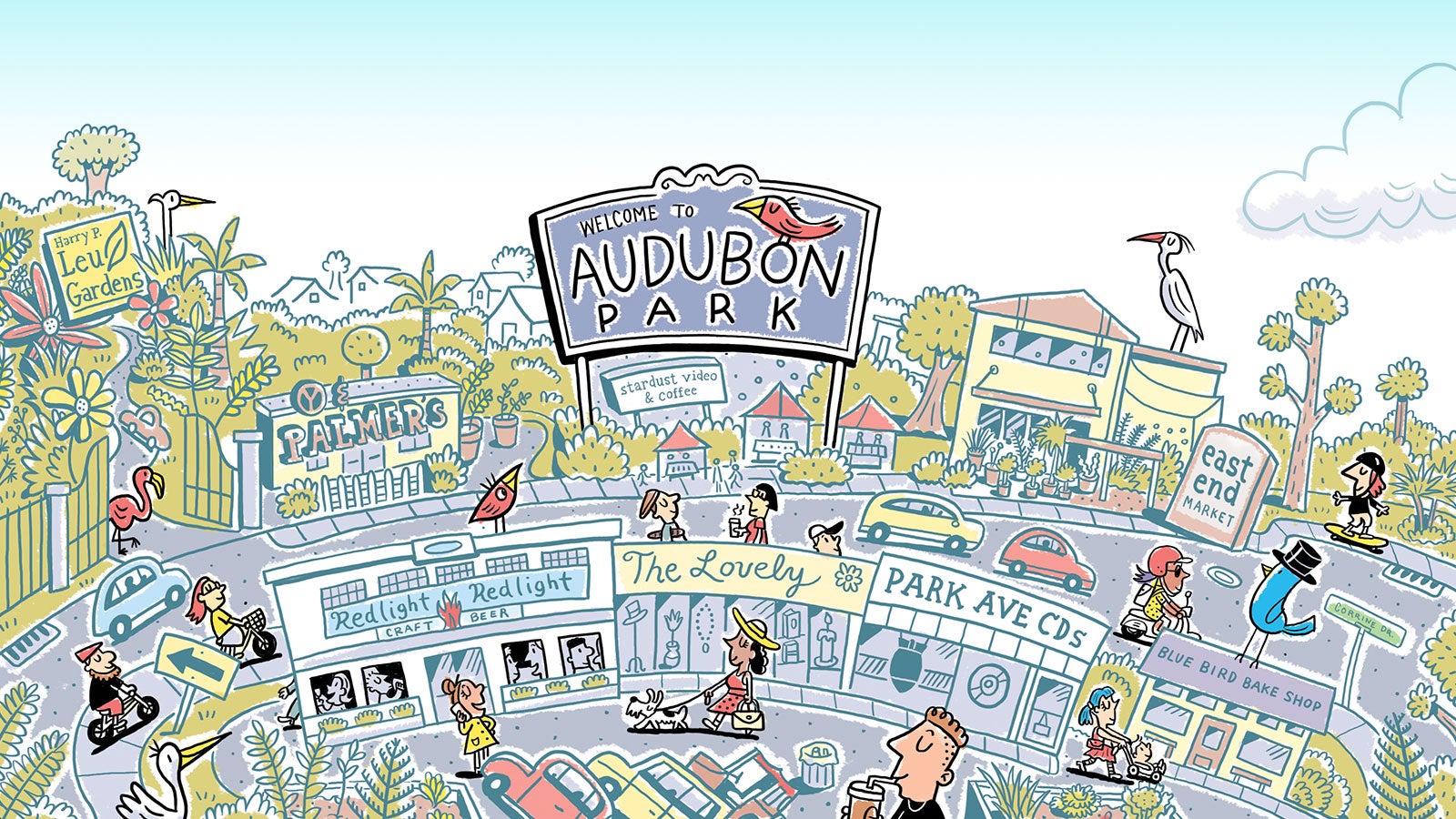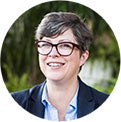
The Place Maker
Fall 2016 | By Eric Michael ’96

Marvel has a passion for placemaking. Her work in the eclectic Audubon Park Garden District neighborhood northeast of downtown combines public engagement with new business development and forward-thinking urban planning to inspire economic, environmental and social sustainability. As a result, the district was recognized with a 2016 Great American Main Street Award from the National Main Street Center. But what does it really take to build a strong community?
1. Start at Home
My husband and I bought a house in Audubon Park in 1990. I believe in supporting local businesses, so one day I was shopping at Park Ave CDs and by the register there were hand-cut flyers that read, “Do you want to make a better community?” I wish I had saved it because it was really life-changing. I was at that first meeting [of the Audubon Park Garden District] and at every one since. Then our director gave notice, and she recommended me for the job, [which] I’ve been doing since September 2012. If you’re willing to do the work, you can create the kind of community you want to be a part of.
2. Nurture Homegrown Businesses
I think a great neighborhood is built on [the] backbone of its independent businesses. Really great communities have great local businesses with a lot of community involvement, and that’s reflected in [Audubon Park]. I think of some of the vibrant neighborhoods in New York City — they have great one-off restaurants, cafés and bookstores. If there are only big chain [stores], it’s really not an interesting place to live.
3. Embrace the Decision-makers
It’s enormously beneficial to involve your community’s decision-makers. For us, it’s critical to have the kinds of partnerships where there’s someone in [a local] store, restaurant or church who can tell you, “Yes, you can hold an event here,” or “We’ll participate in this.” We try to do projects that draw people in based on what they’re passionate about, as long as it fits under our mission. It just so happened that [in Audubon Park], there was an interest in sustainability, environmentalism and supporting local businesses.
4. Set a Reasonable Scale
It’s better to start small and manageable, and then build — whether it’s an event, a class or promoting what someone else in the community is doing. We tried to identify things that were unique about Audubon Park that we could wrap our arms around with our limited resources — and then we began experimenting. Today we’re partnering with other organizations, either for-profit or nonprofit, where we have a shared interest. And I think it’s so important to set a three-month maximum window for projects. Anything longer than that and it doesn’t feel real, which allows you to drag your feet.
5. Create Popular Programming
I can’t overemphasize how important programming is to the building of a community. Programming is anything planned that brings people out into the community and engages them with one another and local businesses. It can involve anything that reflects the culture of your community and reinforces who you are and who you would like to be. It doesn’t require a multimilliondollar investment. We’ve held gardening classes, wine tastings, cooking classes. We rely on partnerships. By teaming with local merchants in conjunction with local nonprofits and groups, you can do a ton of community building. It’s a huge placemaking plus.
6. Spread the Word
People love being connected [and] knowing what’s going on. We’re very active on social media, and we have an email newsletter that highlights what we have coming up in our programming and what’s happening with the local schools, public arts, news. I try to make it as useful and compelling as possible so people feel invested in our community. And I always include a personal note so that people know there’s a real person on the other end of the line.
Illustration by Ethan Long.